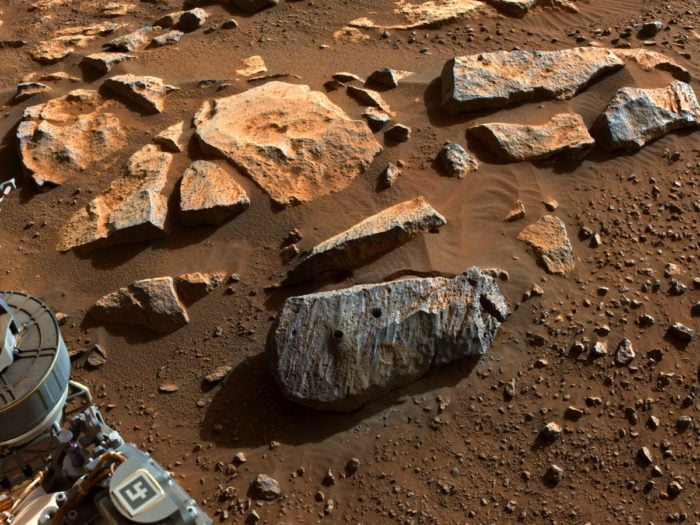
Scientists announced on Wednesday that they have discovered “significant amounts of water” in the Valles Marineris on Mars.
The discovery was made by an orbiter traveling around the planet, called the ExoMars Trace Gas Orbiter. The orbiter was launched in 2016 as part of a mission conducted by the European Space Agency and Roscosmos.
The orbiter discovered the water in Valles Marineris, an extensive canyon system on the red planet that is 10 times longer, five times deeper, and 20 times wider than the Grand Canyon in the United States.
The water was detected by the orbiters FREND, or Fine Resolution Epithermal Neutron Detector. The discovery came as something of a surprise as Mars’s water is typically found in its polar regions in the form of ice, but his canyon system is situated south of the red planet’s equator, where temperatures are too high for water ice to exist.
A study describing the discovery was published on Wednesday in the journal Icarus.
“With (the Trace Gas Orbiter) we can look down to one meter below this dusty layer and see what’s really going on below Mars’ surface — and, crucially, locate water-rich ‘oases’ that couldn’t be detected with previous instruments,” said study author Igor Mitrofanov in a statement.
“FREND revealed an area with an unusually large amount of hydrogen in the colossal Valles Marineris canyon system: assuming the hydrogen we see is bound into water molecules, as much as 40% of the near-surface material in this region appears to be water.”
A study of images from Mars shows that ancient water that once existed on the surface of Mars shaped the landscape of the planet, according to an announcement made in October.
Photographs of the Jezero crater show that the geography of the Red Planet was affected by the movement of water billions of years ago; the new evidence collected by the rover will help in the ongoing search for any evidence of life on the planet, according to the study, which was published yesterday in the journal Science.
The Perseverance rover landed in Mars’ Jezero crater back in February, beaming images of its descent all the way down to the surface of the planet and giving renewed hope to researchers who have tasked themselves with finding traces of life on the planet. The new research is a result of the study of the images it took during its first three months on the planet.
Now, because of photographs taken recently by the Rover, scientists can see just how a now-vanished river once entered into a lake, laying down sediment in the typical delta pattern that is visible from just above the planet.
Cliffs that once formed the high banks along the delta are shown in the high-resolution images; even their layers from sedimentation are visible in the new photos.
See all the latest news from Greece and the world at Greekreporter.com. Contact our newsroom to report an update or send your story, photos and videos. Follow GR on Google News and subscribe here to our daily email!



